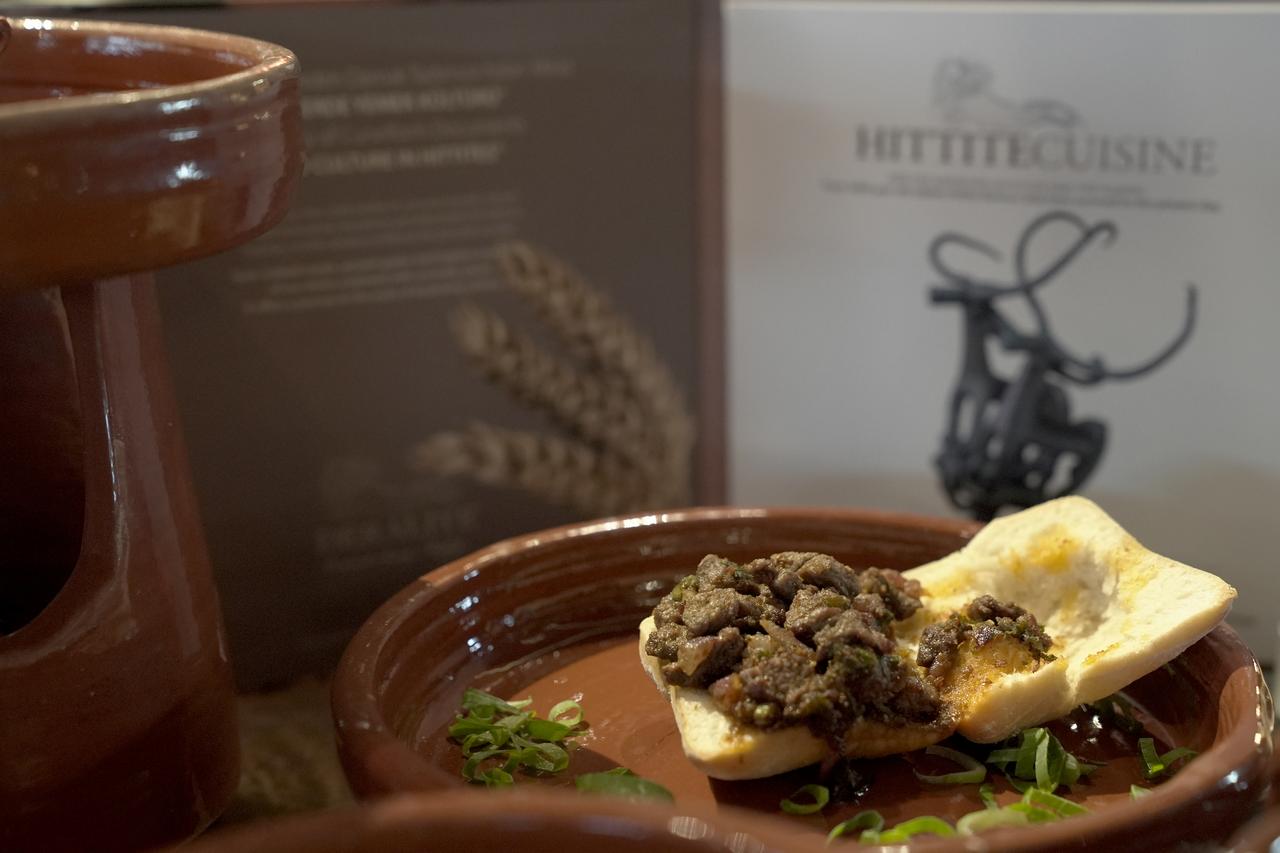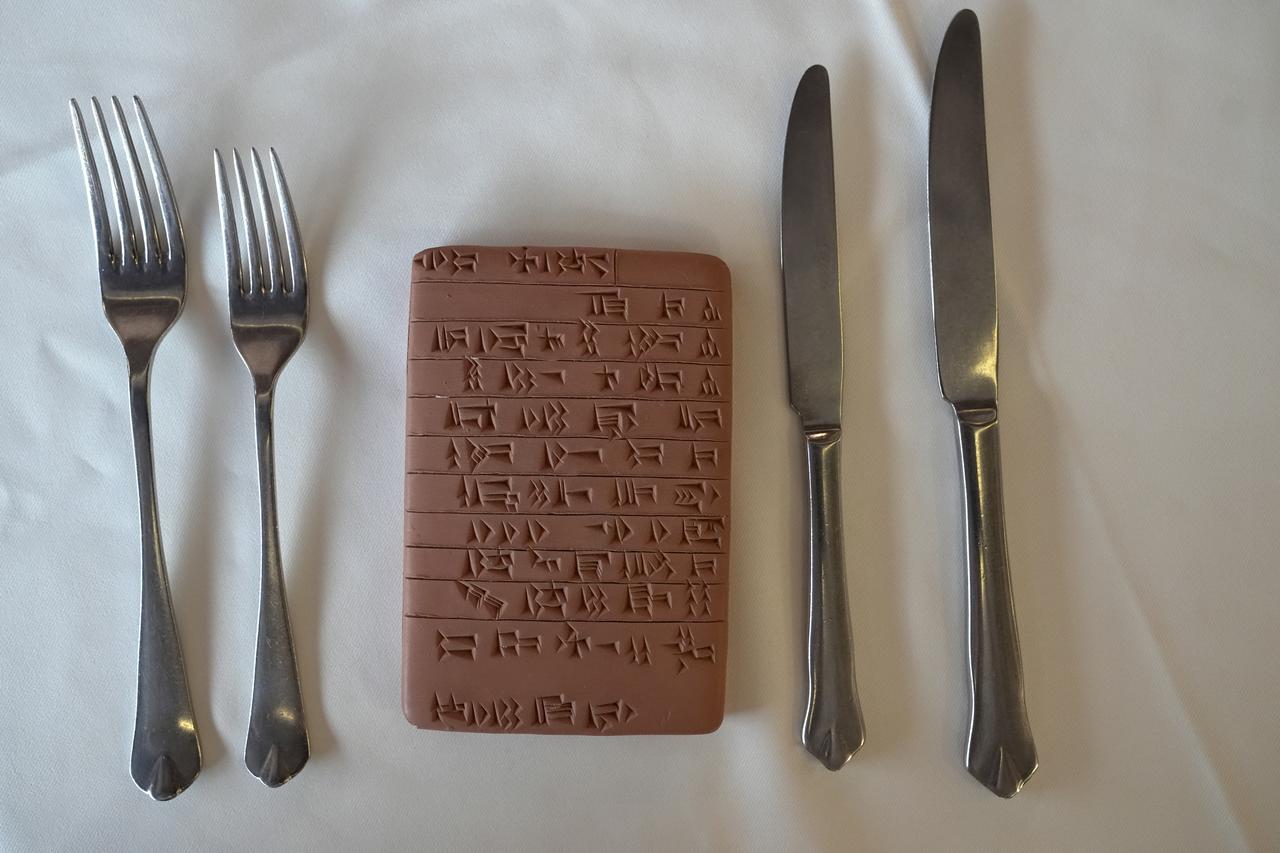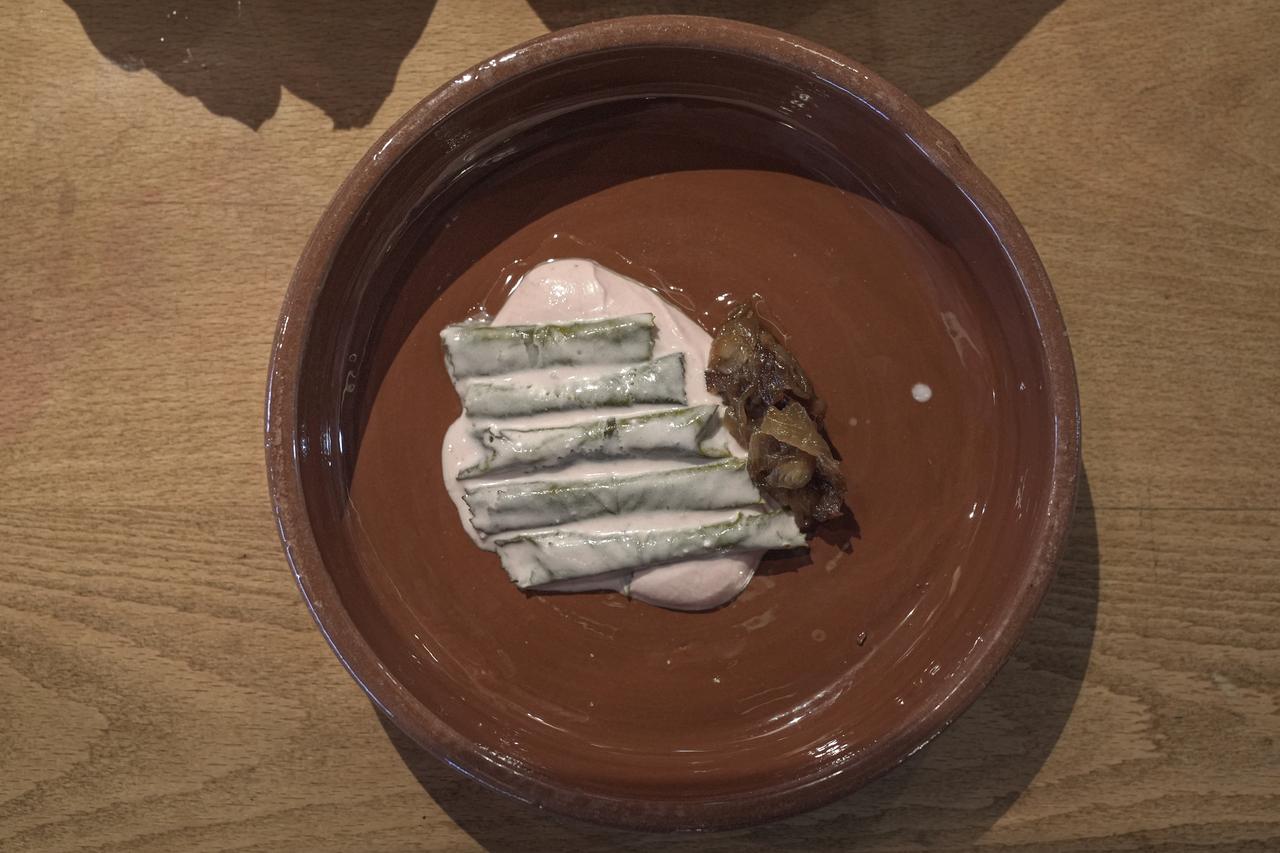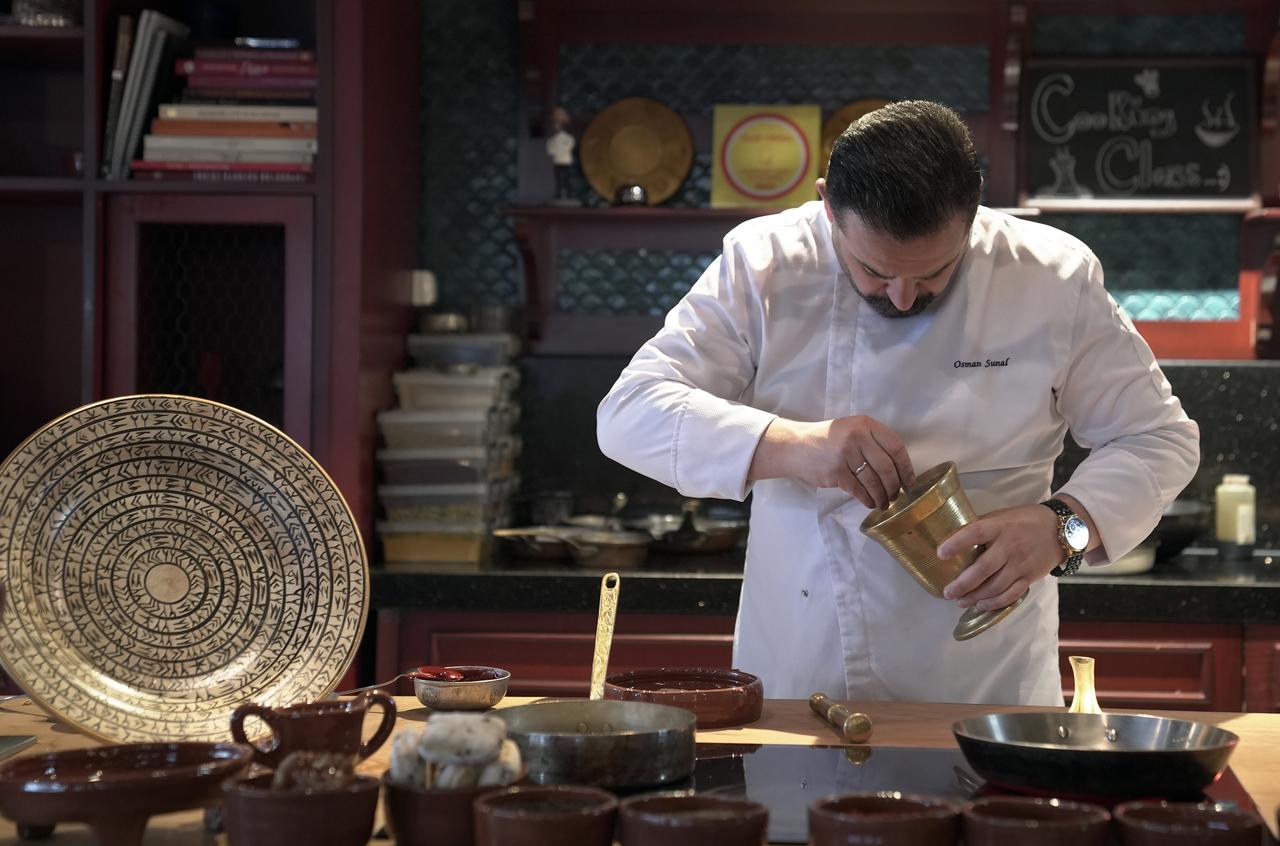
In the heart of Anatolia, long before the Ottoman sultans rose and fell, a different civilization ruled the kitchen.
Today in Istanbul, chef Necati Yilmaz is bringing that world back to life with an 11-course menu inspired by Hittite recipes, serving dishes that echo a language and a lifestyle spoken more than three millennia ago.
 In the heart of Anatolia, long before the Ottoman sultans rose and fell, a different civilization ruled the kitchen. Thousands of years later, the echoes of Hittite cuisine are still simmering in Turkish pots. In a restaurant in Istanbul far from the ruins of Hattusa, the ancient Hittite capital, a clay tablet sits on the table. Its surface is covered in the wedge-shaped script of a language spoken more than three millennia ago. ( Esra Bilgin - Anadolu Agency )">
In the heart of Anatolia, long before the Ottoman sultans rose and fell, a different civilization ruled the kitchen. Thousands of years later, the echoes of Hittite cuisine are still simmering in Turkish pots. In a restaurant in Istanbul far from the ruins of Hattusa, the ancient Hittite capital, a clay tablet sits on the table. Its surface is covered in the wedge-shaped script of a language spoken more than three millennia ago. ( Esra Bilgin - Anadolu Agency )">
At a restaurant far from the ruins of Hattusa, the ancient Hittite capital, a clay tablet sits on the table.
Its surface bears cuneiform—the wedge-shaped writing impressed on clay tablets—while a QR code on the back lets guests read the menu in Turkish or English.
For many, the script alone briefly pulls them into another time. “I’m not an investor or a businessman.
I’m a chef,” Yilmaz told Anadolu Agency. “So I thought, the way I can promote this culture is through food. And that’s how I set out on this path.”
 In the heart of Anatolia, long before the Ottoman sultans rose and fell, a different civilization ruled the kitchen. Thousands of years later, the echoes of Hittite cuisine are still simmering in Turkish pots. ( Esra Bilgin - Anadolu Agency )">
In the heart of Anatolia, long before the Ottoman sultans rose and fell, a different civilization ruled the kitchen. Thousands of years later, the echoes of Hittite cuisine are still simmering in Turkish pots. ( Esra Bilgin - Anadolu Agency )">
Yilmaz has been cooking and serving Hittite dishes for around eight months, but the groundwork took far longer.
After a visit to Corum two years ago, he kept returning—41 trips over 18 months—guided by local officials to recover old recipes and techniques.
Corum, once the capital of the Hittite Empire, became both a compass and a pantry for the project.
The chef distilled seasonal practices into a year-round, 11-course menu through guidance and trial and error.
 In the heart of Anatolia, long before the Ottoman sultans rose and fell, a different civilization ruled the kitchen. Thousands of years later, the echoes of Hittite cuisine are still simmering in Turkish pots. ( Esra Bilgin - Anadolu Agency )">
In the heart of Anatolia, long before the Ottoman sultans rose and fell, a different civilization ruled the kitchen. Thousands of years later, the echoes of Hittite cuisine are still simmering in Turkish pots. ( Esra Bilgin - Anadolu Agency )">
Service itself follows a ritual: on Thursdays and Fridays, all diners are seated together at 7:30 p.m., and courses roll out in unison until 10 p.m.
Plates are modeled on Hittite-era pottery and crafted from Corum clay, while ingredients such as wheat, cherry leaves, and plums are sourced from the same soil that fed the Hittite heartland.
Yilmaz said diners have responded with enthusiasm—“Some even told me they felt reincarnated because of our presentations and storytelling”—and he added that visitors from the U.S., Canada and the U.K. have made special trips inspired by these meals.
 In the heart of Anatolia, long before the Ottoman sultans rose and fell, a different civilization ruled the kitchen. Thousands of years later, the echoes of Hittite cuisine are still simmering in Turkish pots. ( Esra Bilgin - Anadolu Agency )">
In the heart of Anatolia, long before the Ottoman sultans rose and fell, a different civilization ruled the kitchen. Thousands of years later, the echoes of Hittite cuisine are still simmering in Turkish pots. ( Esra Bilgin - Anadolu Agency )">
The Hittites ruled much of Anatolia from the 17th to 12th centuries B.C., and their foodways still ripple through everyday life in modern Türkiye, Yilmaz said.
Wheat stood at the core of their cuisine. He noted their remarkable range of breads, with 200 to 300 varieties.
Munevver Kaya, a gastronomy lecturer at Istanbul Kent University, put that centrality into sharper focus: cuneiform tablets contain more than 146 different terms for bread and refer to over 180 types in total.
A famous early Hittite sentence, “Nu NINDA-an ezzateni watar-ma ekuteni”—“You will eat bread and drink water”—captures how fundamental bread was and helps bridge past and present understandings of Anatolian food culture.
 In the heart of Anatolia, long before the Ottoman sultans rose and fell, a different civilization ruled the kitchen. Thousands of years later, the echoes of Hittite cuisine are still simmering in Turkish pots. ( Esra Bilgin - Anadolu Agency )">
In the heart of Anatolia, long before the Ottoman sultans rose and fell, a different civilization ruled the kitchen. Thousands of years later, the echoes of Hittite cuisine are still simmering in Turkish pots. ( Esra Bilgin - Anadolu Agency )">
Kaya said Hittite influence reaches beyond ingredients into cooking techniques, meal etiquette, and the social meaning of food.
Information survives in both written sources and archaeology, including more than 23,000 cuneiform tablets that illuminate daily life, religion and ritual.
The Hittites imagined their gods in human form and believed they needed to eat, so they offered foods like their own and documented the offerings in religious texts.
Meat had a sacred role—“It was believed that the smell of roasted meat would bring the gods closer to humans,” Kaya said, adding that the meat was roasted thoroughly, even burned. Living far from the sea, they favored freshwater fish, grains such as barley and wheat, and a striking variety of breads.
Some recipes still made in Turkish homes trace directly to Hittite kitchens. Kaya cited mahluta, a lentil-based soup still common in provinces such as Malatya, Kahramanmaras and Kilis, noting that the British Museum included it in a cookbook of 100 of the world’s oldest recipes.
Traces of Hittite culinary culture remain most visible in central Anatolia but spread south as well, particularly in the regions she named.
For Kaya, preserving this heritage requires more than household practice: research, cultural events and food tourism—supported by local governments—can help protect and promote it.
Yilmaz said admiration drove him to prepare the Hittite menu. He wanted “that culture, that architecture and those historical artifacts” to be visited more.
His dining room now functions as a bridge between a modern city and an ancient heartland, where wheat, honey and onions once anchored a cuisine and where stories still rise with the steam from the pot.